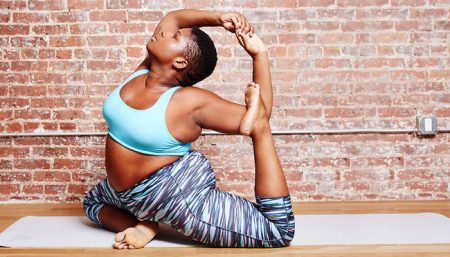Living with chronic pain, can be a cause of constant discomfort, with an attack on your reserves of strength, energy, and feelings of well-being. Using Yoga techniques for pain management can help minimize medication usage and help you lead a happier and fuller life. The best techniques for pain management are Yoga breathing, relaxation, and meditation. These three aspects of Yoga act to distract your mind from pain, reduce your body’s tension in reaction to pain, and provide an opportunity to “move through” the pain instead of resisting it so it loses its full impact.

Yoga is believed to reduce pain by helping the brain’s pain center regulate the gate-controlling mechanism located in the spinal cord and the secretion of natural painkillers in the body. Breathing exercises used in yoga can also reduce pain. Because muscles tend to relax when you exhale, lengthening the time of exhalation can help produce relaxation and reduce tension. Awareness of breathing helps to achieve calmer, slower respiration and aid in relaxation and pain management. The act of controlling the breath in yoga also helps reduce pain. The body has a natural phenomenon built in to the nervous system, which keeps tension in the muscles “on stand by” when the lungs are full, or “pressurized”.
Lengthening the time of exhalation can help produce relaxation and reduce tension in the body.
Relaxation training is a step – by – step process of relaxing each of your body’s muscles; this helps to counteract the body’s natural tendency to increase muscle tension in an unconscious effort to “push” the pain away – which only causes the pain to increase. Mental relaxation is more effective in the relief of chronic pain, when combined with meditation and rhythmic breathing.

Meditation training is a conscious effort to reduce your mind’s constant chatter and to concentrate instead simply on the feeling of not thinking. Regular daily practice of meditation builds a foundation of internal strength by opening a door to a part of yourself that is not governed by the demands of your physical body. Start with five minutes. Build up the time slowly until you can do 20 minutes. You might want to try two 20 minute sessions eventually, one in the morning and the other at night. If you can only do five minutes, don’t worry. We all have our comfort levels.
Yoga’s inclusion of relaxation techniques and meditation can help reduce pain. Part of the effectiveness of yoga in reducing pain is due to its focus on self-awareness. This self-awareness can have a protective effect and allow for early preventive action.
Related Links
- Yoga Asana and Exercises
- Pranayam: a universal self-healing technique
- Yoga & Stress
- Top 10 Yoga Exercises to Prevent Lower Backache
- Top 10 Yoga Exercises to relieve Sciatica
Disclaimer
The Content is not intended to be a substitute for professional medical advice, diagnosis, or treatment. Always seek the advice of your physician or other qualified health provider with any questions you may have regarding a medical condition.



